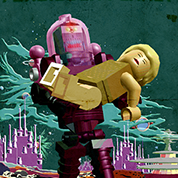
LEGO decoration swatches for Adobe Illustrator and Adobe Photoshop
By
BrokenEye, in Digital LEGO: Tools, Techniques, and Projects
-
Recently Browsing 0 members
No registered users viewing this page.

By
BrokenEye, in Digital LEGO: Tools, Techniques, and Projects
No registered users viewing this page.